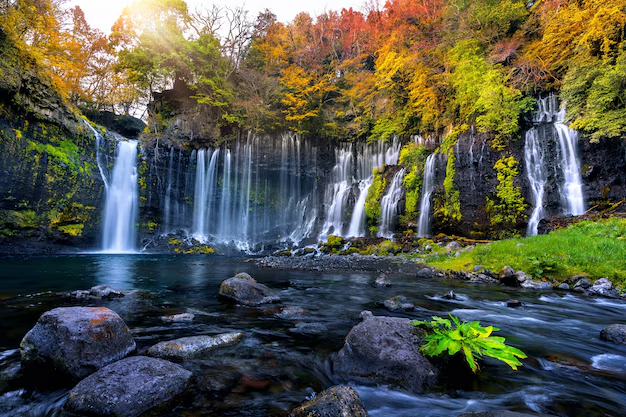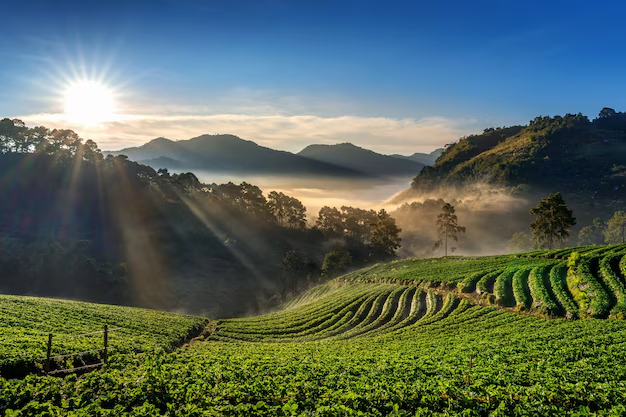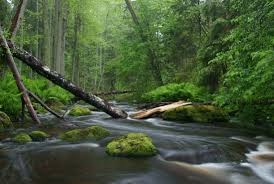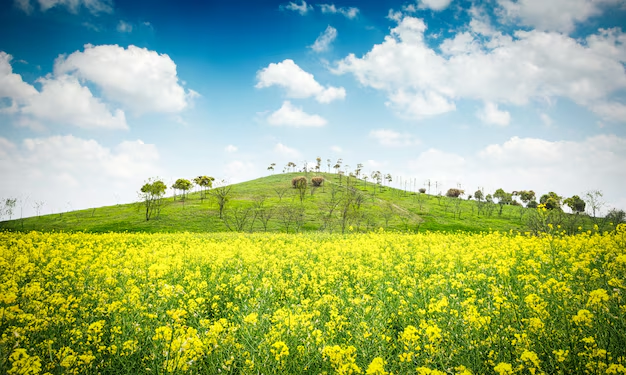Nature has always been an artist, painting landscapes that captivate the soul and inspire awe. From the towering peaks of majestic mountains to the delicate petals of a wildflower, the outdoors offers a visual feast that celebrates the beauty of the Earth. Whether it’s the vibrant colors of a sunset, the intricate patterns of leaves, or the vast expanse of the ocean, nature’s canvas is constantly changing, offering a never-ending spectacle of color, texture, and form. This article delves into the captivating world of nature’s visual beauty, exploring how its scenes are painted with every season, every dawn, and every shift in the weather.
The Palette of Nature
Nature’s canvas is vast, and its palette is boundless. It’s painted with the most incredible colors, from the deep blues and purples of a stormy sky to the soft greens of a forest glade. Each part of the natural world brings its own unique shades and hues. In forests, leaves change color with the seasons, offering vivid reds, oranges, and yellows in the fall, while vibrant greens dominate during the spring and summer months. The sky shifts from pale blues in the morning to fiery reds and oranges at sunset, while the ocean transforms from calm, serene blues to tumultuous, dark hues during a storm.
These colors aren’t just visually striking—they also hold symbolic meaning. Green often represents growth, renewal, and tranquility, while the fiery reds and oranges of a sunset can evoke feelings of passion, excitement, and reflection. The rich golden hues of autumn can signify change and the passage of time, while the crisp whites of winter bring a sense of purity and stillness.
Landscapes: The Everchanging Scenery
One of the most awe-inspiring aspects of nature is its landscapes. From vast deserts to lush jungles, from rocky cliffs to tranquil beaches, nature’s landscapes offer a stunning variety of shapes, textures, and patterns. Each landscape tells a unique story, and the way the land is shaped by wind, water, and time adds to the visual masterpiece that is nature.
The grandness of mountain ranges, with their jagged peaks and deep valleys, reminds us of the power of nature to shape the Earth. Similarly, the gentle curves of sandy dunes in a desert or the sprawling beauty of rolling hills in the countryside showcase the softer, more fluid aspects of nature’s artistry. The variety of these landscapes makes the outdoors a visual celebration of contrasts—where the stillness of a lake is juxtaposed with the crashing power of ocean waves, and the serenity of a meadow contrasts with the wildness of a thunderstorm.
The Beauty of Flora and Fauna
While landscapes are a major part of nature’s visual celebration, the flora and fauna that inhabit these spaces are equally captivating. The intricate patterns on butterfly wings, the delicate symmetry of a flower, or the powerful presence of a lion—each living being adds to the overall artwork of the outdoors. Plants and animals have evolved to thrive in their specific environments, and their beauty is often a reflection of the ecosystem they are a part of.
Wildflowers, for example, come in a staggering array of colors and shapes. From the deep purples of lavender fields to the delicate whites of daisies, these flowers offer a burst of color and life in even the most remote corners of the world. Trees, too, contribute their own visual art, with their twisting branches and diverse leaf shapes creating an ever-changing tapestry as seasons shift.
Animals add movement to this visual feast. The graceful flight of a bird across the sky or the subtle ripple of fish in a stream creates a dynamic and constantly shifting picture. These living beings move across the land, creating patterns and rhythms that enhance nature’s visual display.
The Role of Light and Weather
Light plays a significant role in nature’s visual beauty. As the sun rises and sets, the changing light transforms the landscape, creating new perspectives and altering the way we see the world. The golden glow of dawn, the soft midday light, and the dramatic shadows at sunset all contribute to the changing palette of the outdoors.
Weather, too, is an important player in this visual celebration. A cloudy sky can turn a familiar landscape into something mysterious and dramatic, while a rainstorm can make everything feel fresh and new. Fog can add an element of mystery, blurring the lines between land and sky, while snow can turn the world into a peaceful, serene wonderland. Every shift in weather brings a new layer of beauty to nature’s ever-changing canvas.
Nature as a Source of Inspiration
Nature has long been a source of inspiration for artists, photographers, and writers. The stunning landscapes, vibrant colors, and intricate patterns found in nature have influenced countless works of art, poetry, and literature. Nature’s ability to evoke emotion and provoke thought is part of its enduring appeal. Whether it’s the breathtaking beauty of a mountain view or the quiet peace found in a forest, nature’s visual power has the ability to connect us to something larger than ourselves.
Spending time outdoors can help us slow down and appreciate the beauty that surrounds us. In our modern, fast-paced world, it’s easy to overlook the small wonders of nature, but when we take the time to observe and immerse ourselves in the natural world, we can experience a profound sense of peace and creativity.
7 Frequently Asked Questions About Nature’s Visual Beauty
1. Why is nature so visually appealing?
Nature’s beauty is a result of its diversity and harmony. The varied landscapes, vibrant colors, and intricate details in plants and animals create a visually stimulating experience that resonates with our senses.
2. How does light affect nature’s beauty?
Light plays a significant role in how we perceive nature. The angle, intensity, and quality of light change throughout the day, affecting the colors, textures, and moods of landscapes and environments.
3. What is the significance of colors in nature?
Colors in nature often carry symbolic meanings, such as green for growth and tranquility, blue for calmness, and red for energy or passion. These colors influence our emotions and connect us to the natural world.
4. Can spending time in nature improve creativity?
Yes, studies have shown that spending time in natural settings can boost creativity, reduce stress, and help people think more clearly. Nature provides an environment that fosters relaxation and inspiration.
5. How do animals contribute to nature’s beauty?
Animals bring movement, life, and vibrancy to the natural world. Their behaviors, patterns, and presence add dynamic beauty to landscapes, from the graceful flight of birds to the intricate patterns of insects.
6. What role do plants play in nature’s visual beauty?
Plants contribute a wide array of colors, shapes, and textures to the landscape. Flowers, trees, and shrubs provide not only visual beauty but also ecological functions that support life.
7. How can we protect nature’s beauty?
Protecting nature involves preserving natural habitats, reducing pollution, and practicing sustainable living. Conservation efforts help ensure that future generations can experience the same visual wonders that nature offers.
Conclusion
Nature’s canvas is a never-ending masterpiece that celebrates the beauty, diversity, and complexity of the Earth. From the grand vistas of mountains to the tiny details of a blooming flower, the outdoors is a visual celebration of life. By immersing ourselves in nature, we can experience the stunning colors, textures, and patterns that make the world around us so remarkable. Whether it’s the changing of the seasons or the movement of animals across the land, nature’s art is always on display, offering inspiration, peace, and connection.
Key Takeaways
- Nature’s beauty is expressed through a vast array of colors, landscapes, and living organisms.
- Light and weather play significant roles in how nature’s beauty is perceived and experienced.
- Plants, animals, and the natural world’s ever-changing landscapes create a dynamic and inspiring visual spectacle.
- Spending time in nature can inspire creativity, reduce stress, and foster a deep connection to the Earth.
- Protecting nature’s visual beauty through conservation is essential for future generations to experience its wonder.




